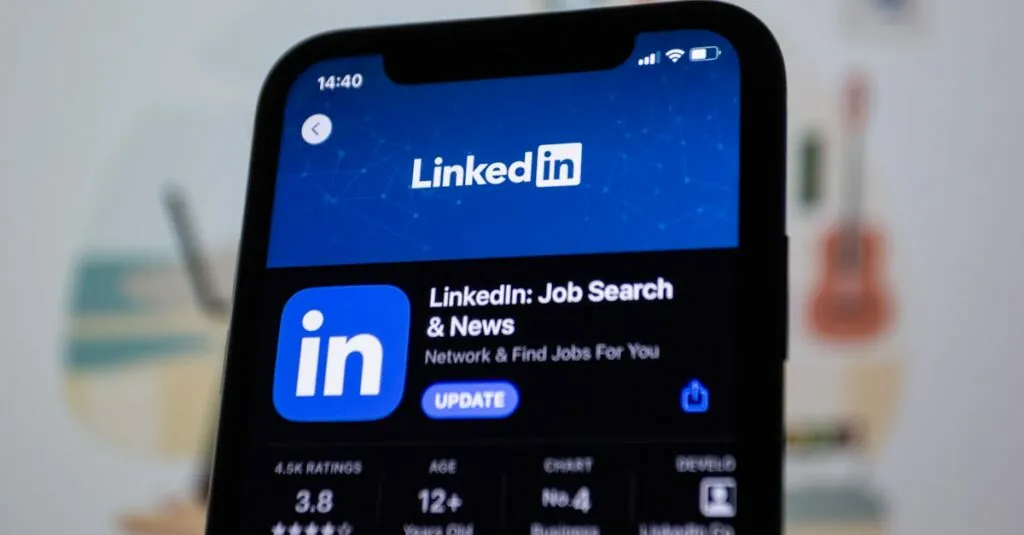Table of Contents
ToggleEver tried to track a friend on their iPhone only to find their location stuck in the Stone Age? It’s like waiting for a bus that never arrives. In today’s fast-paced world, we rely on location sharing more than ever, whether it’s for coordinating meetups or ensuring loved ones are safe. So, when that little dot refuses to budge, it can be both puzzling and frustrating.
Common Reasons for Location Update Issues
Location update issues on iPhones can arise from various factors. Understanding these common reasons facilitates resolving problems swiftly.
Location Services Settings
Location Services settings might obstruct accurate location updates. Users must verify that Location Services are activated in the device settings. Often, selecting “While Using the App” for specific apps enhances location accuracy. Privacy settings for each app can restrict location access, leading to outdated information. Checking for iOS updates also plays a critical role, as outdated software might result in bugs impacting location functionality.
Network Connection Problems
Network connection problems frequently hinder location updates on iPhones. Users must ensure a stable Wi-Fi or cellular connection for effective location tracking. Weak signals or intermittent connections can delay location data transmission. In some cases, toggling Airplane Mode on and off may refresh the connection. Restarting the device also resolves underlying connectivity issues, allowing for accurate location updates.
Software Related Factors
Software issues can significantly impact location updates on an iPhone. Many users face challenges due to software-related factors, such as outdated iOS versions or app-specific glitches.
Outdated iOS Version
An outdated iOS version often causes location tracking problems. Apple regularly releases updates that improve functionality and fix bugs. Users may experience consistent issues with location updates if they run an older software version. Checking for updates ensures the device operates on the latest iOS. Navigating to Settings, selecting General, and tapping Software Update allows users to see if an update is available. Regularly updating the iOS maintains compatibility with apps and improves overall device performance.
App Specific Glitches
App-specific glitches can hinder location updates as well. Many third-party applications rely on location services to function accurately. Users often experience difficulties if these apps have not received recent updates or if there are inherent bugs. It’s essential to ensure each app has the latest version installed for optimal performance. Checking the App Store for updates provides users assurance that the applications function properly. Clearing an app’s cache or reinstalling it can also resolve persistent issues that may disrupt location tracking.
Troubleshooting Tips
Location update issues on an iPhone can be resolved with some straightforward troubleshooting steps.
Restarting the Device
Restarting the device often clears minor glitches. To do this, users can press and hold the power button until they see the slider. Sliding it to power off may refresh the system. After a few seconds, powering it back on can help restore location services. This simple action can resolve temporary software issues that might cause the location feature to stall. Users should note that this step applies to all iPhone models, though the button combination may differ.
Resetting Location Settings
Resetting Location Settings can rectify persistent problems. Navigate to Settings, then Privacy, and select Location Services. Turning off Location Services for a moment and turning it back on often resolves issues with app permissions and settings. Users may also consider resetting all settings by going to Settings, then General, and selecting Transfer or Reset iPhone, followed by Reset. This process doesn’t erase personal data but does revert all settings to default, fixing underlying problems with location updates.
When to Seek Professional Help
Users might face persistent location update issues despite troubleshooting efforts. Contacting Apple Support becomes essential in such cases. Experts can diagnose underlying problems and offer specific solutions tailored to individual situations.
Hardware problems may also contribute to location inaccuracies. Malfunctions in GPS components can cause significant tracking failures. Users noticing consistent inaccuracies or dysfunction should consult a professional.
Sometimes, software installations or updates lead to conflicts that hinder location services. If persistent issues arise after a recent update, seeking professional advice is prudent. Specialists can identify and address conflicts between apps and system software, ensuring smoother functionality.
In addition, certain conditions may require professional intervention. If users cannot resolve issues after trying common troubleshooting steps, it signals the need for expert assistance. Resources like authorized service providers or local Apple stores provide reliable support in these scenarios.
Finally, users encountering unresponsive applications related to location sharing should not hesitate to seek help. Professionals can assess app performance and ensure that no critical updates have been overlooked. By prioritizing expert guidance, users ensure a swift resolution to location update problems, enhancing their overall experience with the device.
Location update issues on an iPhone can be frustrating but understanding the common causes can lead to effective solutions. By ensuring Location Services are properly configured and maintaining a stable network connection users can significantly improve their tracking experience. Regularly updating iOS and apps also plays a crucial role in preventing glitches.
When problems persist despite troubleshooting efforts it’s wise to seek professional help. Apple’s support team can provide expert diagnosis and solutions for hardware or software issues that may be affecting location services. Prioritizing these steps can enhance the reliability of location sharing and ultimately lead to a smoother experience for users.








